Samsung Galaxy S8 vs Google Pixel
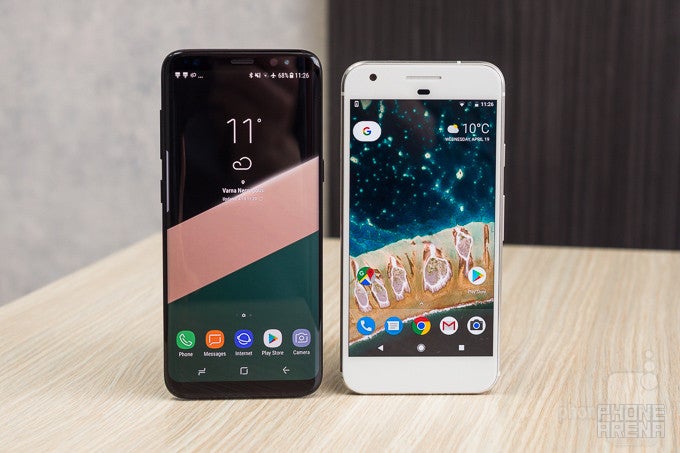
Introduction
Late in 2016, the Google Pixel stirred the cozy arrangement of things in the Android space. The maker of the Android platform itself, Google, entered the phone game and did so with some big ambitions and a phone of its own: the Pixel. It was universally seen as two things: firstly, as one of the fastest, most smoothly performing phones on the Android platform, and secondly, as one of the best camera phones out there.
Fast forward six months to April 2017, and we have the brand new Samsung Galaxy S8 – a new edition to one of the best-selling flagship Android phones. But with these new standards set by the Google Pixel, this time it has a higher bar to clear. Additionally, we are looking to see if Samsung has found an answer to some internal issues: has it fixed the battery and is the S8 perfectly safe? And what about that slight stutter that seems to be present on almost every Samsung flagship phone, no matter how powerful it is? Has the camera improved? And what about that fancy new bezel-less display: is it really the game changer it is painted to be?
We examine all these things and more in our detailed Google Pixel vs Samsung Galaxy S8 comparison, starting right away.
Design
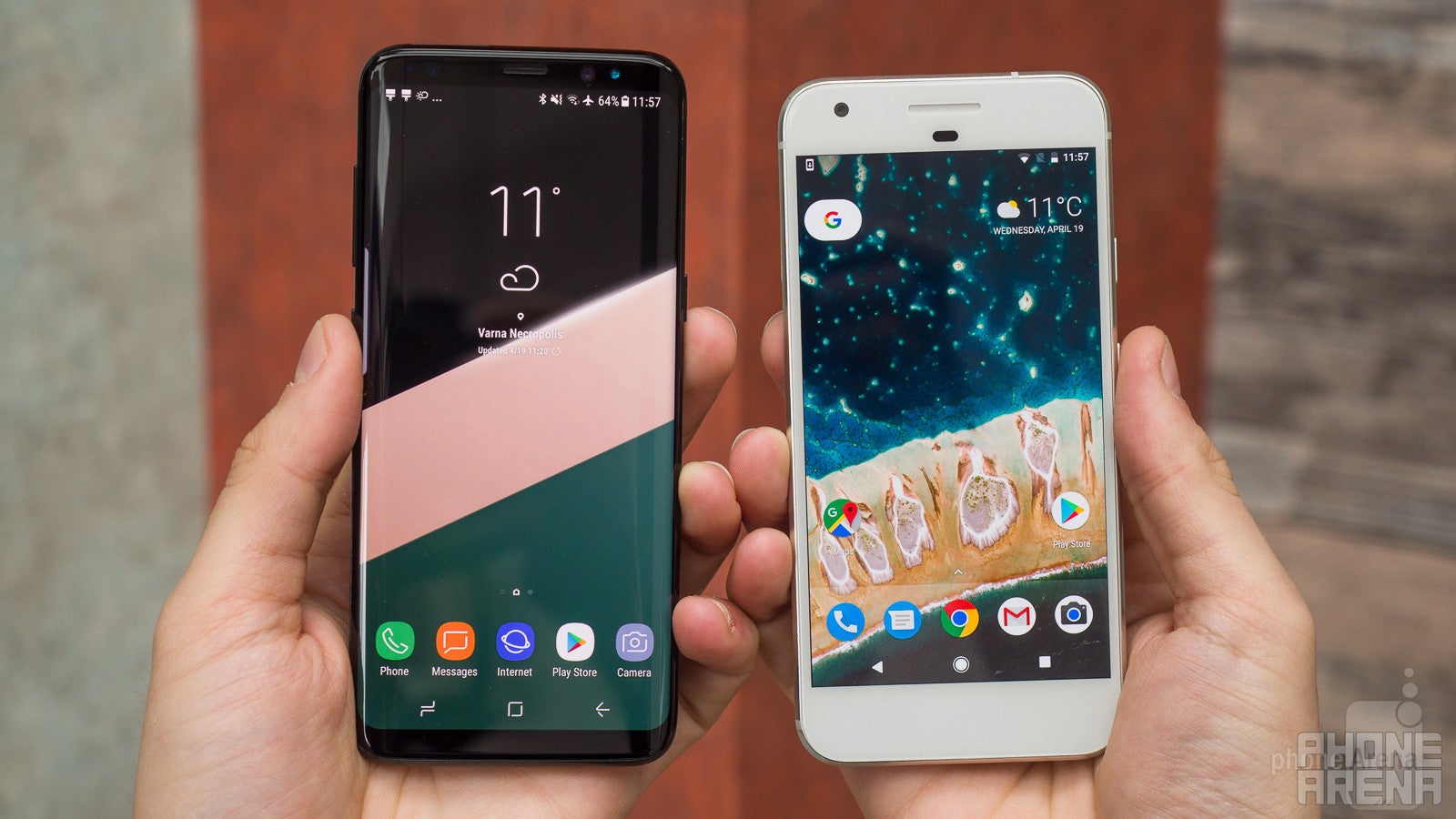
The Pixel is a well-built phone. The Galaxy S8 is lush, prestigious, but its glass back catches fingerprints. The S8 has also got water-proofing and… an extremely weirdly positioned finger scanner.
The Google Pixel is a well-built phone. It features a solid aluminum construction with a distinct glass accent on the back that gives it personality. It has a nice heft and sits well in the hand.
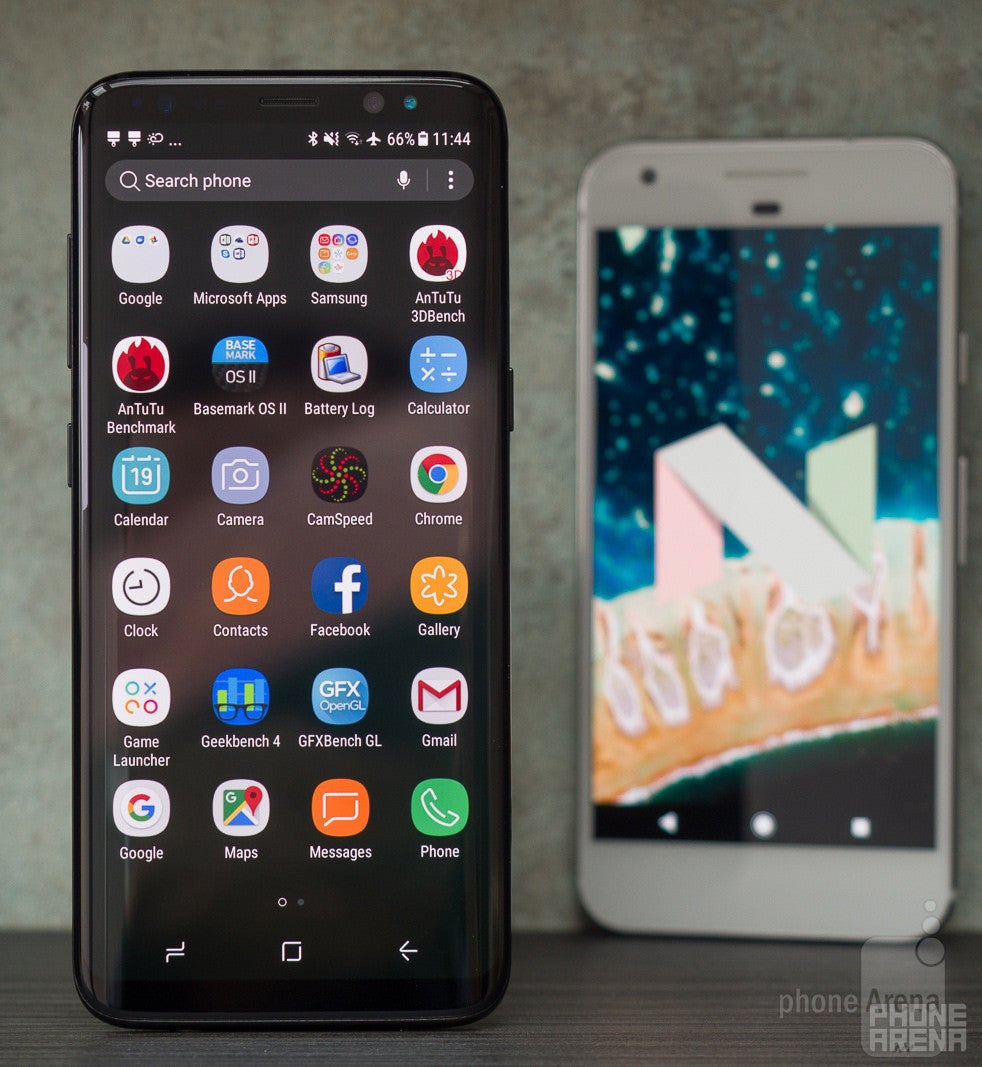
It has one important advantage over the Pixel, though: it’s water-proof, with an IP68 rating, which means that it can remain under 1.5 meters (about 5 feet) of water for up to 30 minutes.
It also has one big disadvantage: an extremely weirdly positioned fingerprint scanner! For whatever reason, Samsung has put the finger scanner right next to the camera on the back, which a place that is neither easy to reach, nor particularly intuitive. You get used to it, but you inevitably place your finger on the camera while reaching for the finger scanner, and it’s just not very convenient. The Pixel also has its fingerprint reader on its back, but in a much more intuitive central position, where your finger naturally rests.
Then, there are the details: the misaligned USB-C charging port on the bottom of the S8 is one detail that is small, but that you cannot unsee. There is still a very slight camera bump on the S8, while the Pixel’s camera does not stick out. In those tiny details, the Pixel seems like the more refined phone of the two.
Display
Stunning, just stunning. These are the thoughts that come to mind after looking at the S8’s bezel-less display. The Pixel features a good display, but just good does not cut it here.

But what most eyes will focus on is not those tiny details: it’s the screen. And the Galaxy S8 has an absolutely gorgeous and in many ways impressive new display. It’s bezel-less, almost magically so, and looking at the large chins on the top and bottom of the Google Pixel, it feels like looking at the distant past. Who needs those bezels anyway and why were they there for so long?
We have a 5.8-inch display on the S8, but it is taller and has a different aspect ratio than the current 16:9 standard. This means that you cannot and should not directly compare the diagonal (5.8” on the S8 vs 5” on the Pixel), as it is not an accurate measure given that we have different screen shapes. Put simpler, the difference in screen size is not as big as those numbers might have you thinking.
What you should look at is the actual area of the screens. We have calculated this for you: the Galaxy S8 screen has an area of some 13.26 in2, while the Pixel display has an area of nearly 10.7 in2. This works out to some 24% difference, and this is approximately how much more screen space you get with the Galaxy S8.
Looking at the tech specs, both phones use AMOLED displays, the 5.8” one on the Galaxy S8 comes with a Quad HD+ resolution of 1440 x 2960 pixels, while the Pixel features a 1080 x 1920 pixel resolution. Side note here: the Galaxy S8 has its resolution lowered by default, but this can be changed from the settings menu. The S8 is slightly sharper once you bump up the resolution, but that difference is hard to notice in regular use. You do notice it, though, if you are among the few who use your phone for virtual reality.
While most screens these days are sharp enough, the difference in color reproduction still remains very different depending on the phone. Both the S8 and the Pixel offer screens that feature different color settings. By default, both phones feature slightly boosted, oversaturated colors that impress at first sight and most people will like them. If you are a photographer or a professional looking for color accuracy you would want closer adherence to the sRGB color standard that is used globally. You have a separate mode on each of the phones that switches the screen to that more toned-down and accurate standard. In both those modes, colors look great on both phones, but our detailed measurements show that the color reproduction on the Galaxy S8 is just a bit more accurate and better tuned.
The S8 display also features the newest Gorilla Glass 5 protective glass for the display, and this is important for an all-glass phone that might have to survive more than one drop during its lifetime.
Interface and Functionality
Pure Android versus Samsung’s skin. You’d be surprised at the polish of Samsung’s skin, but we still find the cleaner Pixel interface more alluring, and it will be the first one with software updates.
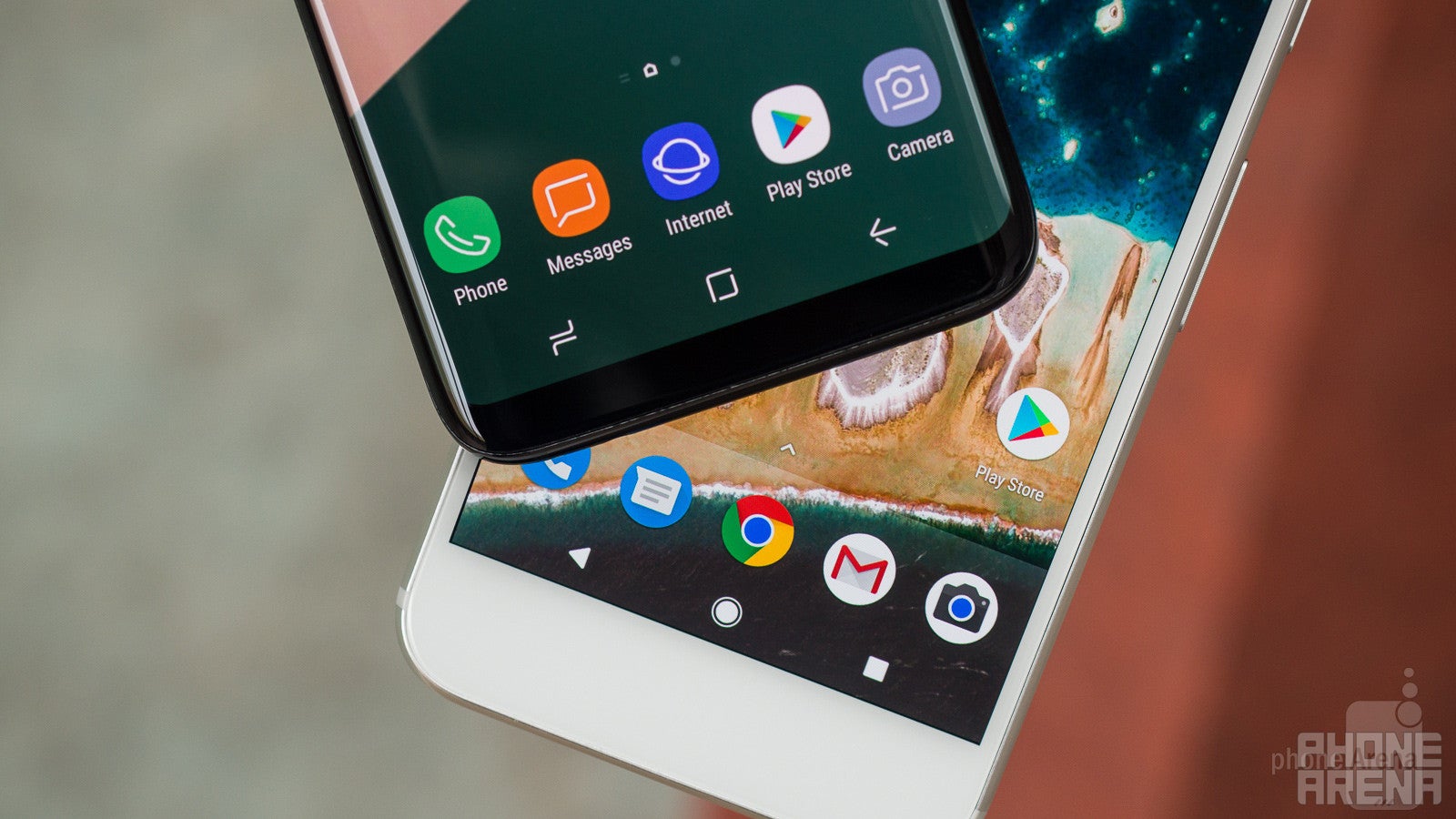
Samsung has been hard at work fixing and improving its custom user interface on top of Android. In the S8 you see its latest and best efforts: with clean and well organized menu system, a new app drawer shortcut (swipe up or down on the home panel), and a new iconography that looks simple (even too simplistic in some cases).
The Google Pixel on the other hand has a pure version of the Android platform, a haven for that group of people looking for that clean stock experience. The beauty of the Pixel, however, is not just in the clean looks, but also in the smooth performance and fast updates. We have seen Samsung take nearly 5 months to deliver the Nougat update on the Galaxy S7, and we have no reason to believe that the S8 will be faster to get the Android O update when the time for it comes later this year. This is the Pixel advantage: you are guaranteed to get those updates on day one, and that is important.
In terms of actual functionality, we don’t find a huge difference: power user features like the Android split-screen multitasking works great on both phones, for instance. Yet multitasking on the bigger screen makes so much more sense: Samsung itself pointed out that you can have a YouTube video playing with a second app with an on-screen keyboard running, and all of that fits on the tall S8 screen. You simply cannot fit so much content on the Pixel.
The taller S8 display gives it some advantages in some apps: for instance, we love how we can see all the weather app information right away, without having to scroll, while you cannot do this on the Pixel. Sure, that has to do with app design as well, but it’s telling.
Both phones come with their distinct voice assistants. The fast and excellent Google Assistant is actually available on both phones. Most of you are familiar with its speed and ability to understand the context of a sentence. Samsung, however, is preparing something on top of that, a new Bixby assistant, reserved for the Galaxy S8. Its bigger advantage is that it will be aware of the app and the context within the app, so that it can do specific things when a specific app is opened. There is even a dedicated physical key with the sole purpose of summoning Bixby. The feature will not be available at launch, but Samsung is working to bring this over the coming months and we will have full impressions then. Currently, the part of Bixby that is available reminds us of Google Now cards, but more colorful: you get to see colorful widgets with a summary of your day, news and notifications.
The keyboard typing experience is excellent on both phones: both have keyboards that are great, with nice vibration feedback and typing that is fast and accurate. The big advantage of having the tall screen on the S8 is that when you type, you can still see a ton of context, while an open keyboard on the Pixel shuts down most of your view in the current app.
Processor, Performance and Memory
The Galaxy S8’s 10nm Snapdragon 835 is the fastest chip on Android, but the Google Pixel still feels like the smoother performer.
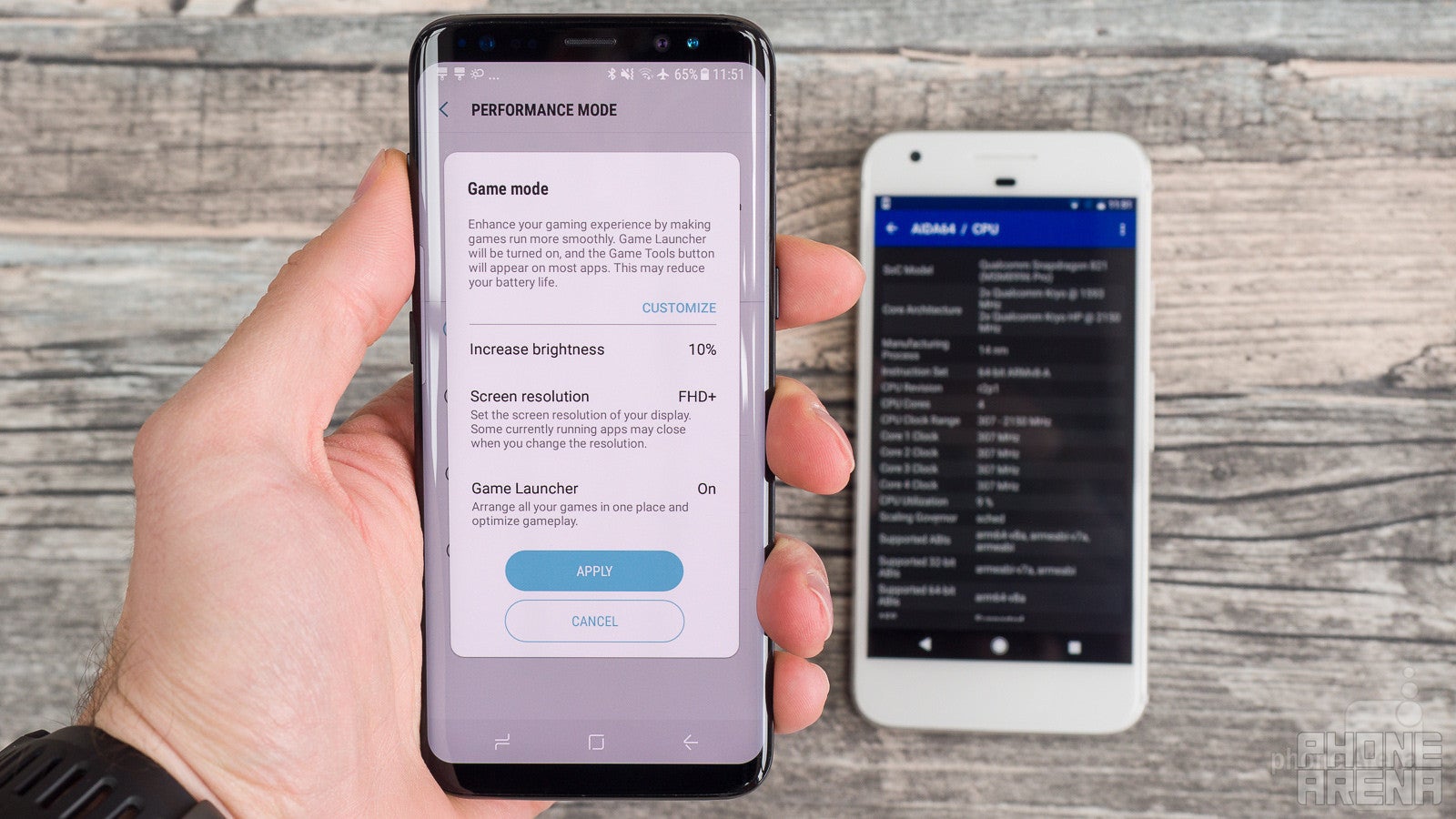
Samsung is in a unique position among phone makers: it’s the biggest of them all and the most profitable one in the Android world, and that’s what gives it some special privileges. For example, the Galaxy S8 is the first phone to ship with the Snapdragon 835, the latest and most powerful system chip by Qualcomm (outside the United States, the S8 runs on the similarly powerful Exynos 8895, and we have the Exynos model for this comparison).
Google’s Pixel, on the other hand, was released earlier and features a less capable Snapdragon 821 system chip, that is manufactured on the 14nm technology, which makes it less power efficient than the newer 10nm tech used for the S8.
All of this is great, but start using the two devices, and you notice that – surprisingly – the Pixel is the phone that has more grace, finesse, and smoother daily performance. The S8 is fast, but it is also just a bit stuttery. Nope, it’s not a huge lag by any means, but still it cannot go unnoticed in a direct comparison. The Pixel has none of that: in fact, it is the smoothest Android performer that we have handled, and the S8 changes none of that.
Benchmarks are another story. The Galaxy S8 crushes them and beats the Pixel by the numbers. It has a more powerful processor that will load games faster. A side note for gamers: both the S8 and the Pixel support the Vulkan API for more advanced games and better performance, which is nice.
Samsung also offers the quite neat DeX dock. This dock allows you to hook up your S8 to an external monitor and have a full desktop experience using only your phone as the base. We have not tested that in depth yet, but initial tests confirm that you can play games on a big screen and multitask quite well using the DeX dock. The dock is not a new idea – Motorola did something similar a few years ago with much less powerful processors, but it makes a lot of sense with current technology on the S8. You don’t have anything similar with the Google Pixel.
Next up: storage. For years, Google has insisted on making Nexus phones without a microSD card slot for expandable storage and this tradition continues in the Google Pixel. The Pixel has a 32 GB storage base model, and for $100 more you can get a 128 gig version, but neither supports a microSD card. Avid 4K video shooters and file hoarders will find the lack of a microSD card a disadvantage, and the 128GB option seems like a better fit for those power users.
The Galaxy S8, on the other hand, ships in a single model with a much more sensible 64GB storage, but it also supports a microSD card slot, so that you can pop in a card to expand that storage at any time.
Internet and Connectivity
The larger screen on the S8 makes a difference in browsing.
The Galaxy S8 and the Google Pixel are both flagship phones, and are offered with the full spectre of 4G LTE bands required for all major U.S. carriers. So you, you will naturally get full LTE compatibility on Verizon Wireless, AT&T, Sprint and T-Mobile. The phones will also work across all major 4G LTE networks in Europe.
The actual browsing experience is one thing that benefits a lot from the taller screen on the Galaxy S8. You need to scroll less, and you see much more on this larger display, plus you can multitask easier as well.
In terms of additional connectivity options, you have NFC on board on both phones. The S8 support Samsung Pay for wireless payments (including support for older, magnetic terminals), while the Pixel only works with Android Pay. Dual-band Wi-Fi is also on board on both, a useful feature in congested urban areas where a single-channel Wi-Fi receiver would often result in reduced download and upload speeds.
Camera
The Galaxy S8 has one of the best cameras, but the Pixel has the best camera.
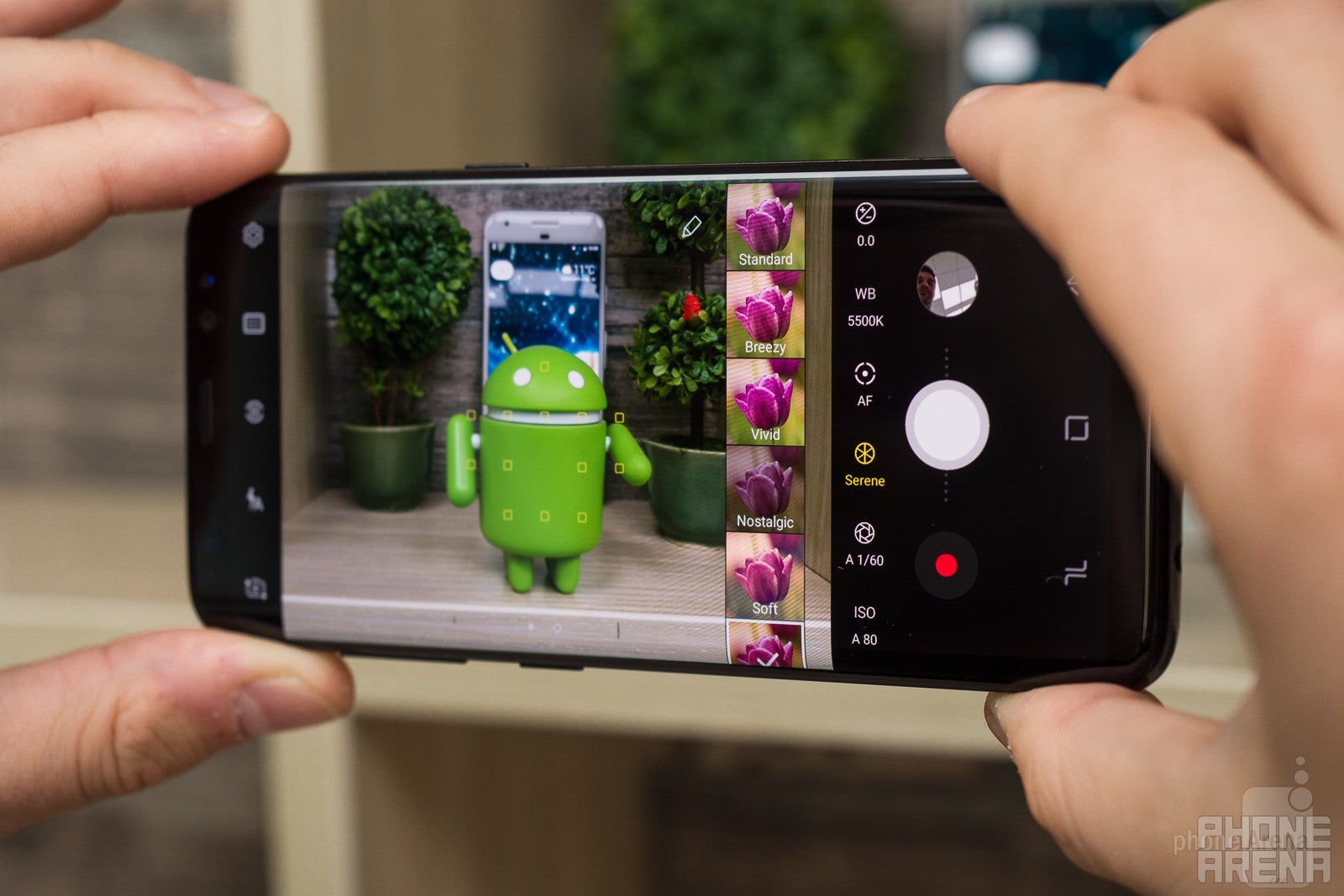
The Google Pixel was crowned by many to be the new camera champ of all phones: Google’s marvelous HDR+ trick in the camera really did a great job. Every image shot on the Pixel by default features this very subtle HDR+ effect for added dynamics. But now we have the Galaxy S8 with an improved camera module and we’re curious to see whether it can capture even better-looking photos.
First, the specs, though: we have 12 megapixel rear cameras on both phones and 8MP front cameras. The Pixel uses a 1/2.3" Sony IMX378 Exmor RS sensor with 1.55-micron pixels and an f/2.0 lens on top of that. The Galaxy S8 relies on a smaller, 1/2.6" Sony IMX260 or Samsung S5K2L1 with 1.4 micron pixels and an f/1.7 lens on top. Both record 4K video, but the Galaxy also has optical image stabilization (OIS) that the Pixel lacks.
The camera apps on both phones are rather clean and simplistic, but we find the one on the Galaxy more intuitive and easier to use. The Pixel has different settings in different places, and it’s a bit hard to find what you are looking for, plus it requires a swipe and a few second pause to switch between photo and video mode, which is a bit annoying. The Pixel does not have a pro mode, nor can it save RAW files via the native camera app. The Galaxy S8, on the other hand, does have a Pro mode with manual control over things like white balance, ISO, shutter speeds, etc, and you can save RAW files from it. You can also select lower resolution and different aspect ratios for your images in the S8 camera.
Image Quality
Specs aside, what people really care about is the end result: do the actual pictures look great? The answer is a resounding yes, for both phones. Just after looking through a few images, it was clear that the camera performance on both phones is top notch. But there are differences, and camera geeks will notice them.
Here is the trend that we see: the Galaxy S8 captures images with slightly less contrast than the Pixel, and that have a little added saturation boost. The Google Pixel, on the other hand, has a very natural look – its images have a bit higher dynamics and a slightly more engaging look. The Pixel has more noise as well, though, and detail was smudged towards the edges of the picture, while the S8 delivered impressively noise-free images that were equally sharp across the full frame.
Subjectively, the Pixel is still the camera to beat, with pictures that capture the eye more and have a little more depth to them, but the Galaxy S8 definitely gets very, very close in terms of image quality.
These are also two of the best front cameras around. Both feature a very similar viewing angle, that is neither too wide, nor too narrow, so that you can capture your selfies with just enough context about the place you visit, or with a group of people. The Galaxy S8 front cam now features auto focus and delivers pictures with a slightly blurred out background that makes your subject pop, while the Pixel has no background blur and everything on it looks a bit more flat. In terms of colors, the Galaxy tends to burn the highlights, while the Pixel does better with dynamics and delivers a more balanced picture. The Pixel is also the sharper of the two, and we mean sharp in a good, natural way.
Video quality
Both the S8 and the Pixel support 4K video, with similar quality as in images: the S8 has a little less contrast and saturation, but it’s also a little bit brighter and better for low light shooting.
Video stabilization is a key aspect of hand-held smartphone videography, and both phones offer stabilization, but in a different way. The S8 features optical stabilization that contributes to more stable videos but also comes with a typical jello effect to videos that is particularly noticeable at the edges and overall the stability of the videos is decent, but not great. The Pixel does a much better job stabilizing shots despite its lack of OIS. It uses an electronic stabilization feature that crops a bit in the frame, but delivers very solid, natural looking stability to your footage.
On a positive note, focus is extremely fast and reliable on both phones. Both phones adjust to varying exposure with a smooth, gradual response which is nice. Overall, we would give the Pixel the slight edge in terms of video recording prowess, but again, the S8 is very close behind.


Sound quality
You have a single bottom-firing loudspeaker on both phones and both sound above the average for a phone. That is to say they are fairly clean and louder than many others, with more definition and fuller sound profile. That’s great news for those who watch a lot of video on Facebook and/or YouTube without bothering to put headphones on. Which one is better? It’s hard to pick, so let’s just say they are on par.
Call Quality
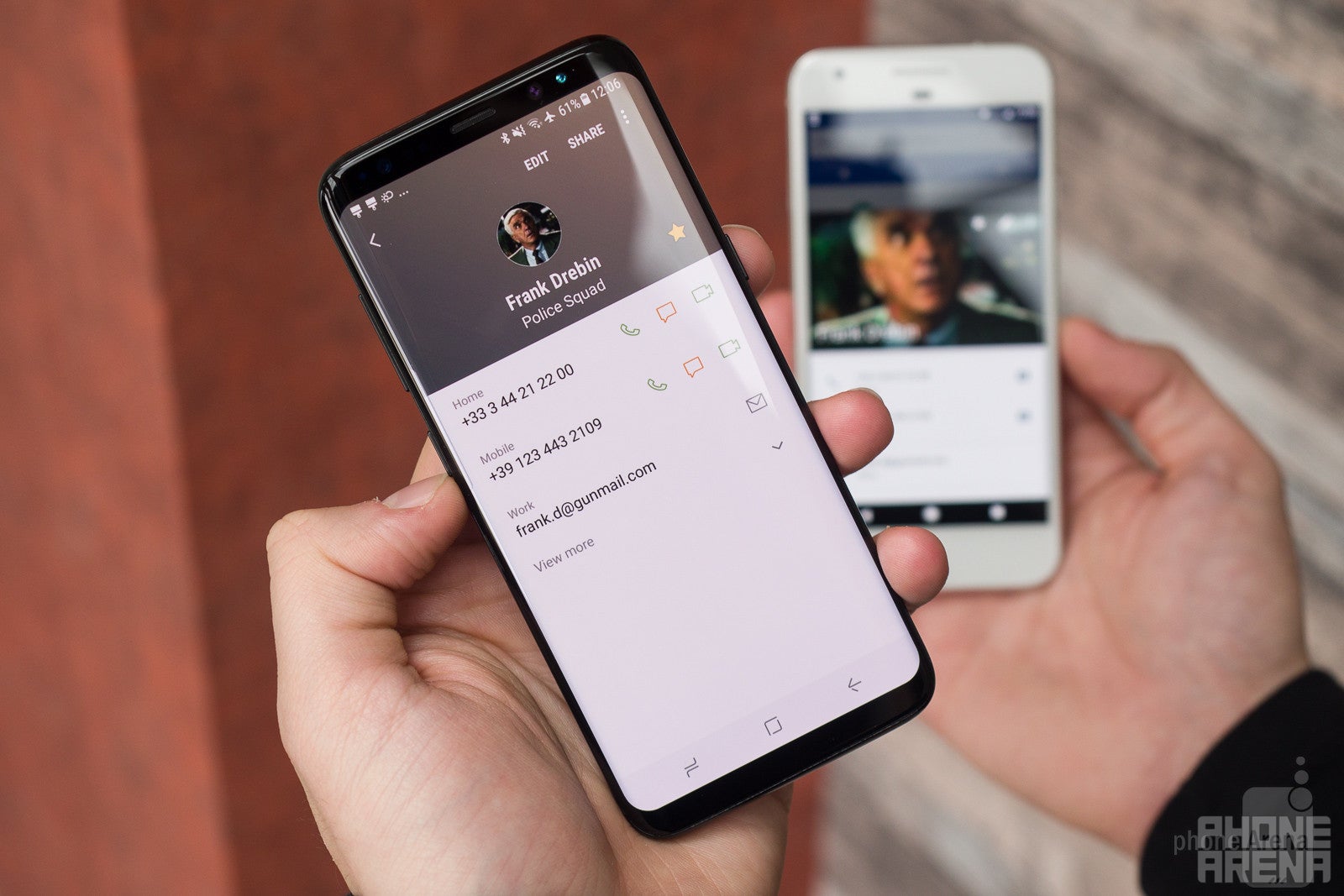
We had no issues with call quality on either phone. Both the S8 and the Pixel do a great job in terms of call quality with clean and crisp sound that is sufficiently loud. If you want the best quality, we advise you to have the volume a couple of stops below the maximum level on both, as you do get some distortion at peak levels.
Both phones also support voice over LTE (or VoLTE). Carriers that support this feature will be able to deliver much cleaner and more pleasing audio via the earpiece.
Battery life
Both have rock solid battery life, with a slight advantage for the Galaxy S8.
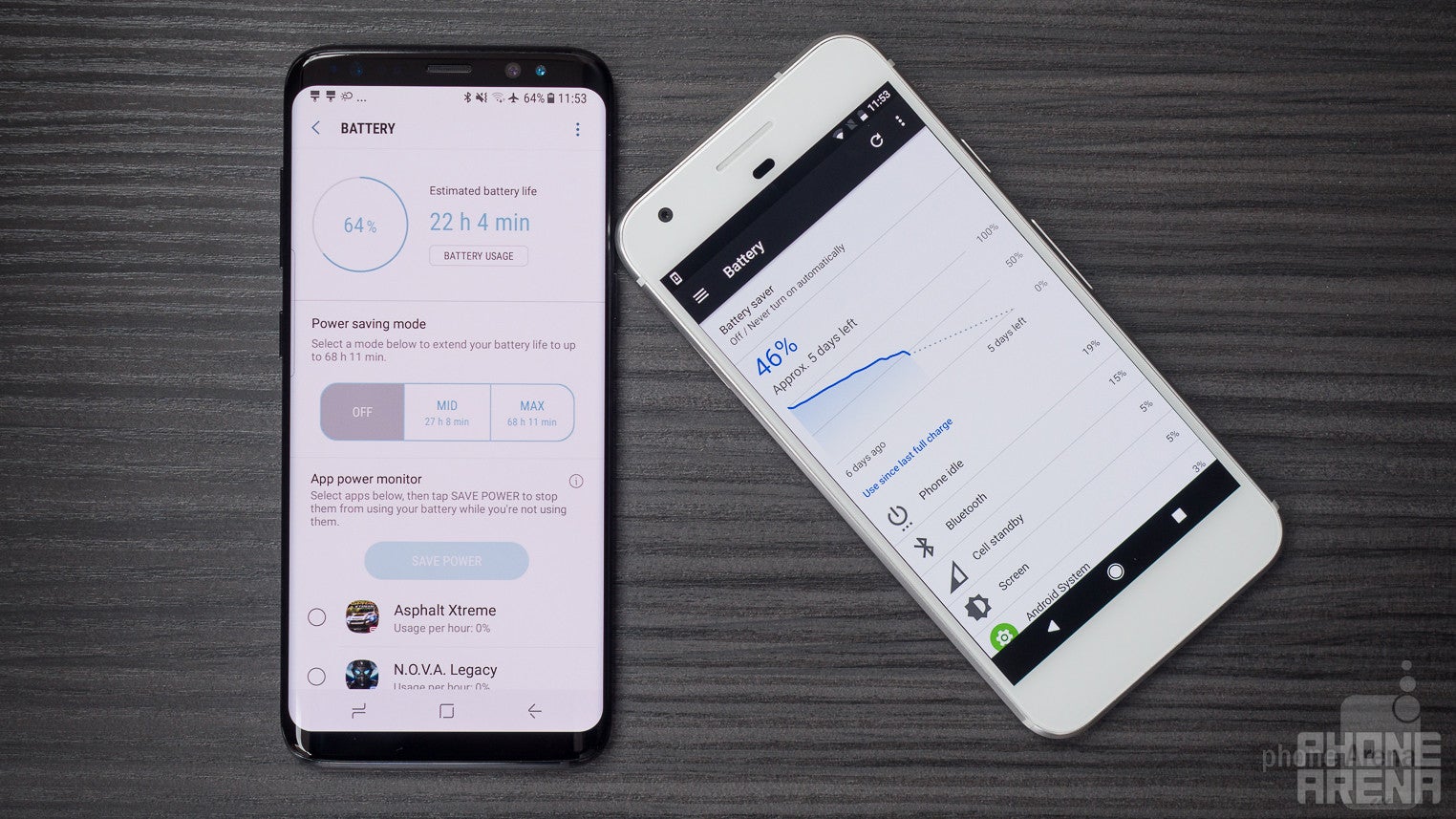
The Galaxy S8 features a 3,000 mAh battery and with the new 10nm system chip under the hood, we had high hopes when it comes to battery life. The Pixel, on the other hand, features a 2,770 battery, but also has a smaller display to deal with.
So which one does better in terms of battery life? We’ve had the Pixel on hand for a few months, and it’s a solid performer, getting through a full day easily. The Galaxy S8 also delivers very solid battery results. We tested both the US-bound Snapdragon version of the S8 and the Exynos model, and while there was a slight difference, both S8 models performed better than most other devices in their class.
For our test, we set the screen at 200 nits to level the playing field for all phones. That’s a brightness level comfortable for indoor use and one that comes often in use.
The Galaxy S8 running on the Snapdragon 835 chip scores 7 hours and a half, while the international Exynos model got a better score of 8 hours and 23 minutes. The Pixel scored 7 hours and 45 minutes, right in between the S8’s scores.
And in our testing, we had no issue getting through a full day with the new S8, just as we had no issue going through the day with the Pixel. We can call it a draw here.
Another aspect of the battery experience is how long it takes to recharge a battery from 0 to 100%. The Galaxy S8 and S8+ take an hour and 40 minutes to do this, while the Pixel is a bit slower at 2 hours. With the S8, you also have the benefit and convenience of wireless charging.
Conclusion
It’s time to wrap things up: we’ve looked carefully at all the various aspect of the Galaxy S8 and the Google Pixel, and it’s now time to consider price.

The S8 is clearly the newer and pricier phone: it carries a full retail price of $720, or $30 over a 24-month period on Verizon Wireless. The Pixel’s full retail price stands at $650, or $27 a month over 24 months on Verizon (Verizon is still the only carrier that offers the Pixel in the United States). In Europe, the S8 price is set at €800, while the Pixel retails for €760, which is also pretty close. These are clearly two of the most expensive phones you can buy.
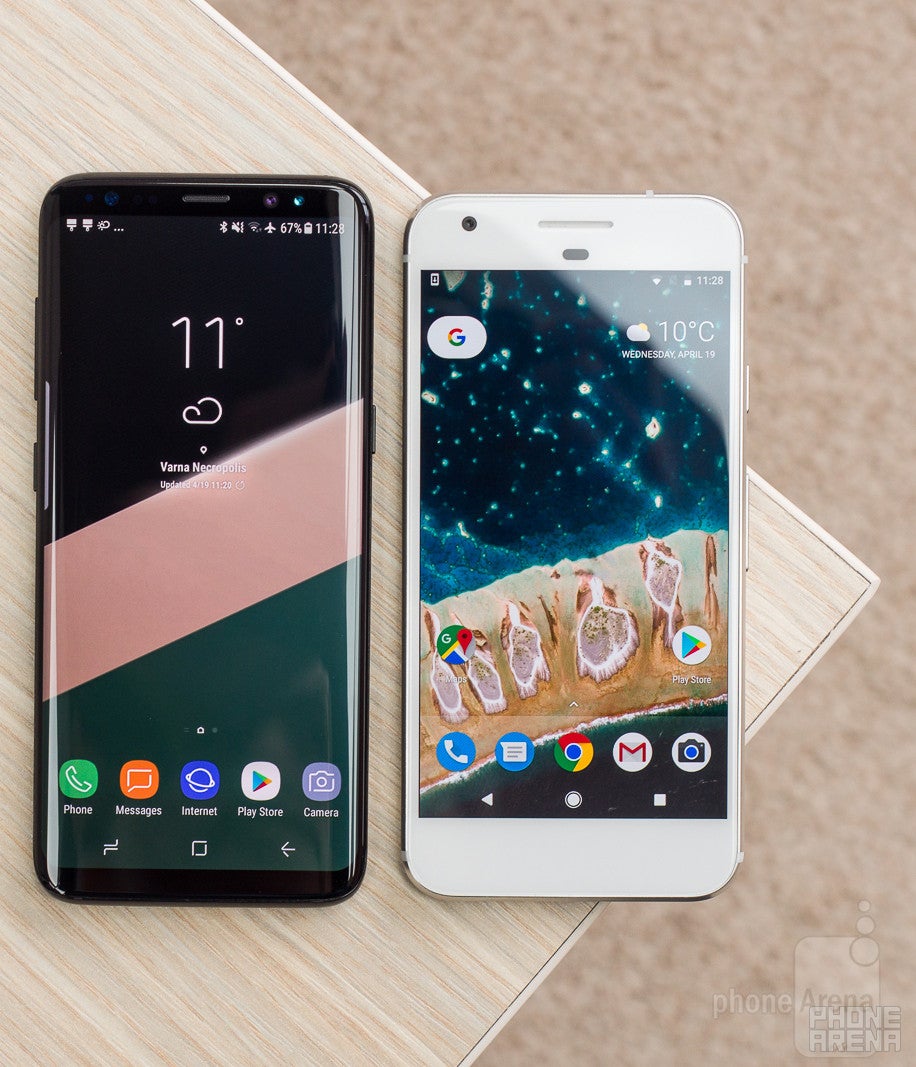
The Google Pixel does not have that futuristic, full-screen style, but it remains an excellent choice: it runs smoother than the Galaxy S8 and this is noticeable, it also has the slightly better camera with more dynamic pictures and better-looking video. It’s also got that pure Android look that many want, as well as the day 1 software updates. That’s something special in the Android world.
At the end of the day, we’re split. We like the looks of the Galaxy S8, but for best performance and camera we turn to the Pixel. Choose your priority between these two, and you will know which of these two phones is the better fit for your needs.
Samsung Galaxy S8
Pros
- Sleek design
- Liberating 64 GB of storage + microSD
- Futuristic bezel-less screen with great colors
- Very good camera with excellent low-light performance
- Water-proof
Google Pixel
Pros
- Smooth performance
- Incredible camera performance, great for both images and video
- Excellent video stabilization
- Good battery life
- Guaranteed to get software updates on day 1


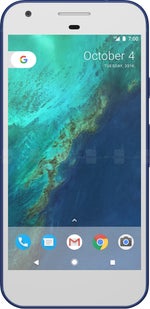















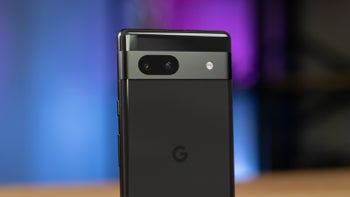
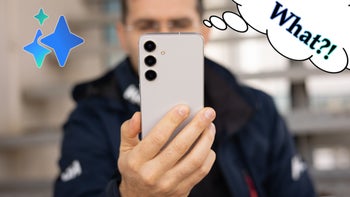
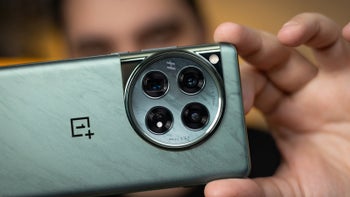
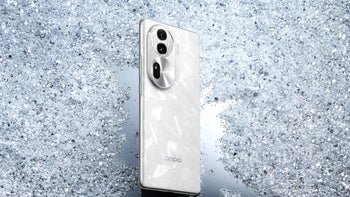

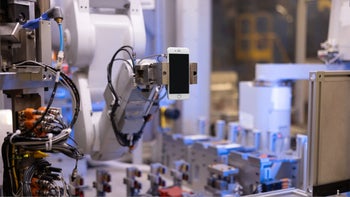






Things that are NOT allowed: